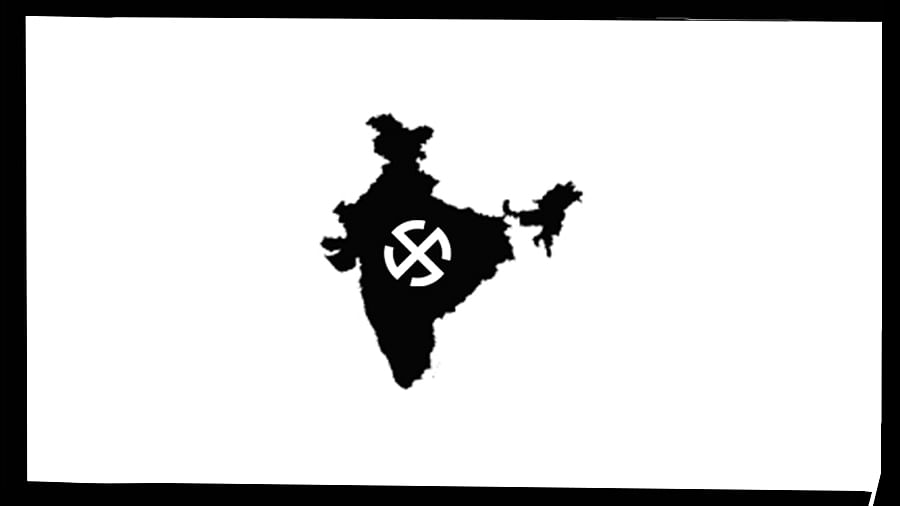
The suddenness with which the BJP-led coalition government announced a special session of parliament and then let out hints that the September 18-22 session would focus on the issue of ‘One Nation, One Election’, triggered several theories.
The perceived stealth with which the party in government pushed the envelope on one of its key agendas to build a case to hold simultaneous elections to the Lok Sabha and all the state assemblies in the country resulted in a pell-mell situation, with other political parties struggling to strategise.
The Modi government has remained steadfast on its intent and during the monsoon session, Law Minister Arjun Ram Meghwal had reiterated its stand that simultaneous elections would bring several benefits. The claimed list of benefits begins with “huge savings” to the public exchequer, and enabling government to direct energies to development work without being hemmed in by the election model code of conduct that gets activated as elections are now conducted for state assemblies at various times.
The cost to the exchequer of the conduct of the first general election in 1952 was said to be Rs 10.54 crore. It crossed Rs 100 crore in 1989 and Rs 1,000 crore in 2009. The 2009 Lok Sabha elections cost an estimated Rs 1,400 crore, and the 2014 elections, Rs 4,000 crore.
Around the time Modi 1.0 government came in in 2014, a debate on the issue of synchronising Lok Sabha and Assembly elections in the country began, with PM Modi raising it during an all-party meeting. The then President Pranab Mukherjee said that political parties should collectively think and find a way forward, although after demitting his office, he voiced opinion against simultaneous polls.
Now, for the first 20 years, the country did have simultaneous polls to elect governments at the Centre and the states. The practice that began in 1952 continued until 1967, when the cycle was broken. In 1968 and 1969, some assemblies were dissolved mid-tenure and then in 1970, Prime Minister Indira Gandhi called for early elections. That led to the constitution of the Fifth Lok Sabha in 1971, whose term was later extended beyond five years – with the imposition of Emergency in June 1975 -- till early 1977.
While four Lok Sabhas -- 8th, 10th, 14th and 15th -- completed the five-year term, the 6th, 7th 9th, 11th 12th and 13th Houses were dissolved ahead of time, as were various state assemblies. These were largely due to inherent instability. Now for the last 55 years, elections to the Lok Sabha and the state legislatures have been held separately.
Arguing for simultaneous polls some two decades ago, the Law Commission had, in its report on electoral laws, suggested incremental steps while acknowledging that while the move was desirable, it could not be achieved anytime soon. The observation can be called prophetic or pragmatic, considering the resistance from the political parties, which need to be on board for it to be implemented.
Among the measures put forward was to advance elections of some assemblies, and a proposal to amend the Constitution to provide for extension/curtailment of the term of one or more assemblies so that the dates for all states could be aligned.
One oft-cited instance is the fanciful reference to the American model of synchronised elections. Yet, the basic difference of the model is that the US follows a presidential form, in which the government does not come to the Congress except for passage of the Budget, and the government cannot be undone without impeaching the President.
For reference, in 2011 the United Kingdom, whose Westminster model India emulated, enacted a Fixed-term Parliament Act to provide stability and predictability of tenure -- only to annul it in 2022, after a decade’s experience.
There is another reference to South Africa, where elections to the national and provincial legislatures are held together while those for municipalities are held two years later.
In 2015, a Parliamentary Standing Committee presented a report on the feasibility of simultaneous polls. The suggestions included holding elections in two groups -- elections to some assemblies at the mid-term of the Lok Sabha, and elections to the rest at the end of the Lok Sabha’s five-year term. It even drew up a tentative list.
The Committee under former President Ram Nath Kovind will require a major effort to build consensus around the issue, especially when general elections are due next summer. Unless a majority of political parties are on board, it would be imprudent to push it.
The move to change the existing practice needs amendment to at least five Articles covering matters ranging from the duration of parliament, dissolution of the Lok Sabha by the President, duration of the state legislatures and the dissolution of state legislatures, to the imposition of President’s Rule. The passage of these amendments will require two-thirds of the members of parliament to be present and vote in its favour as well as ratification by the states.
The sequencing of legislative cycles requires great coordination. Without political consensus, the issue could get enmeshed in a controversy. In the absence of at least near-unanimity, it would be best to avoid pushing it even as efforts to bring political parties around on the idea can continue.
In the interim, as the largest political party in the country, the BJP can demonstrate its commitment to simultaneous polls. All it requires is to walk in that direction when the Lok Sabha elections are held. To start with, elections in Haryana and Maharashtra are due by autumn next year, almost immediately after the Lok Sabha polls. The BJP can opt to advance the elections in these two states, where it heads coalition governments. This, in turn, can create pressure on parties that are rejecting the idea on the ground of it being unworkable or impractical. The ruling party may be able to show the way forward.
(The writer is a senior journalist based in New Delhi)